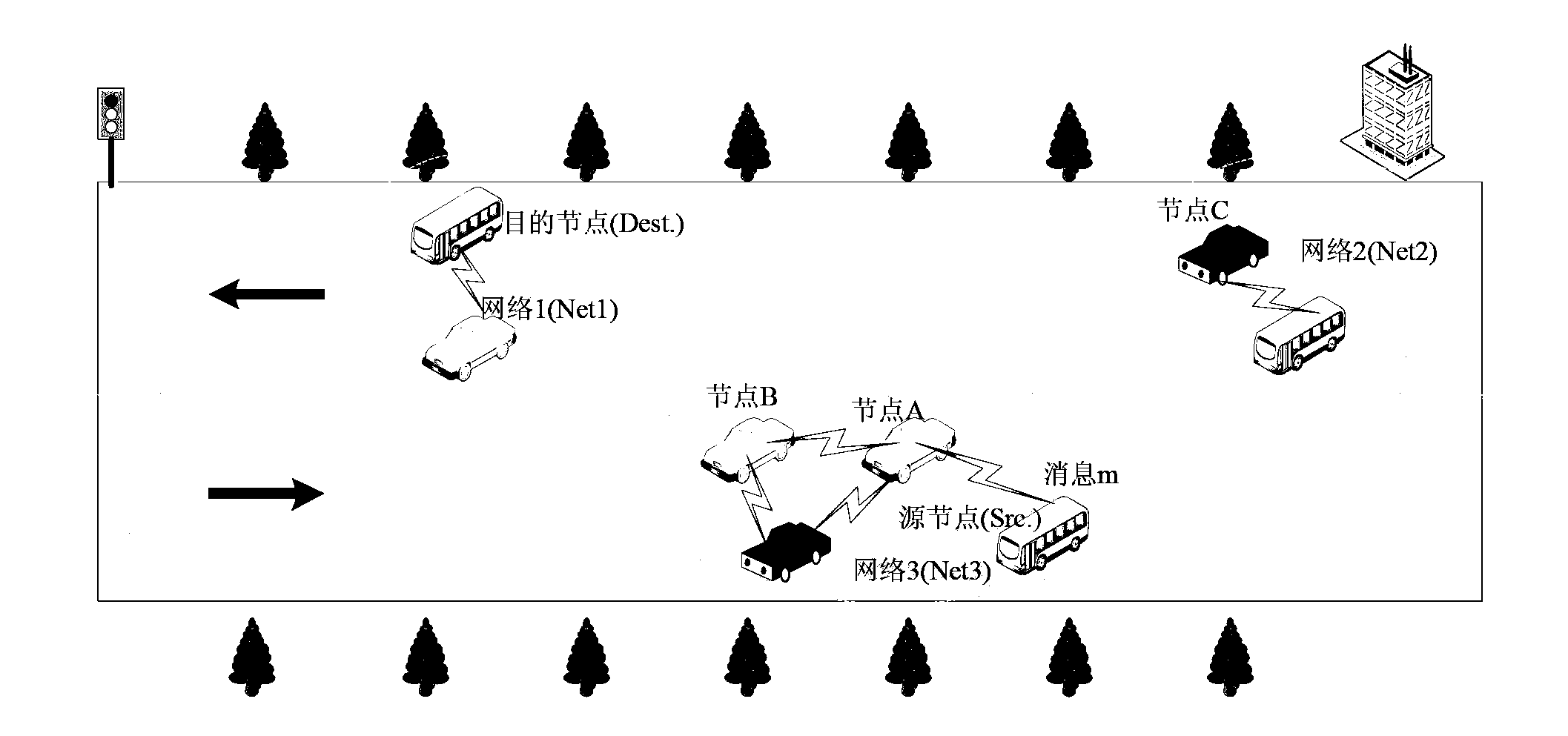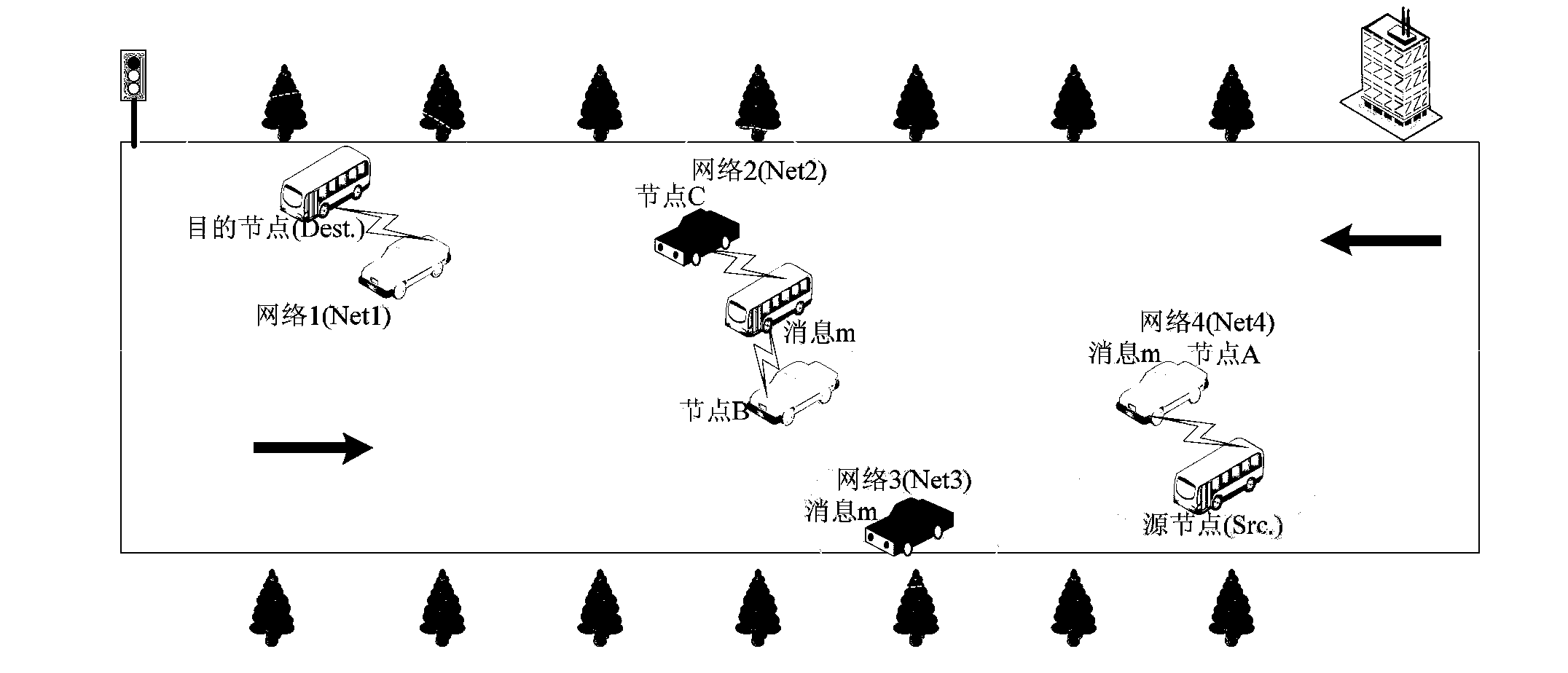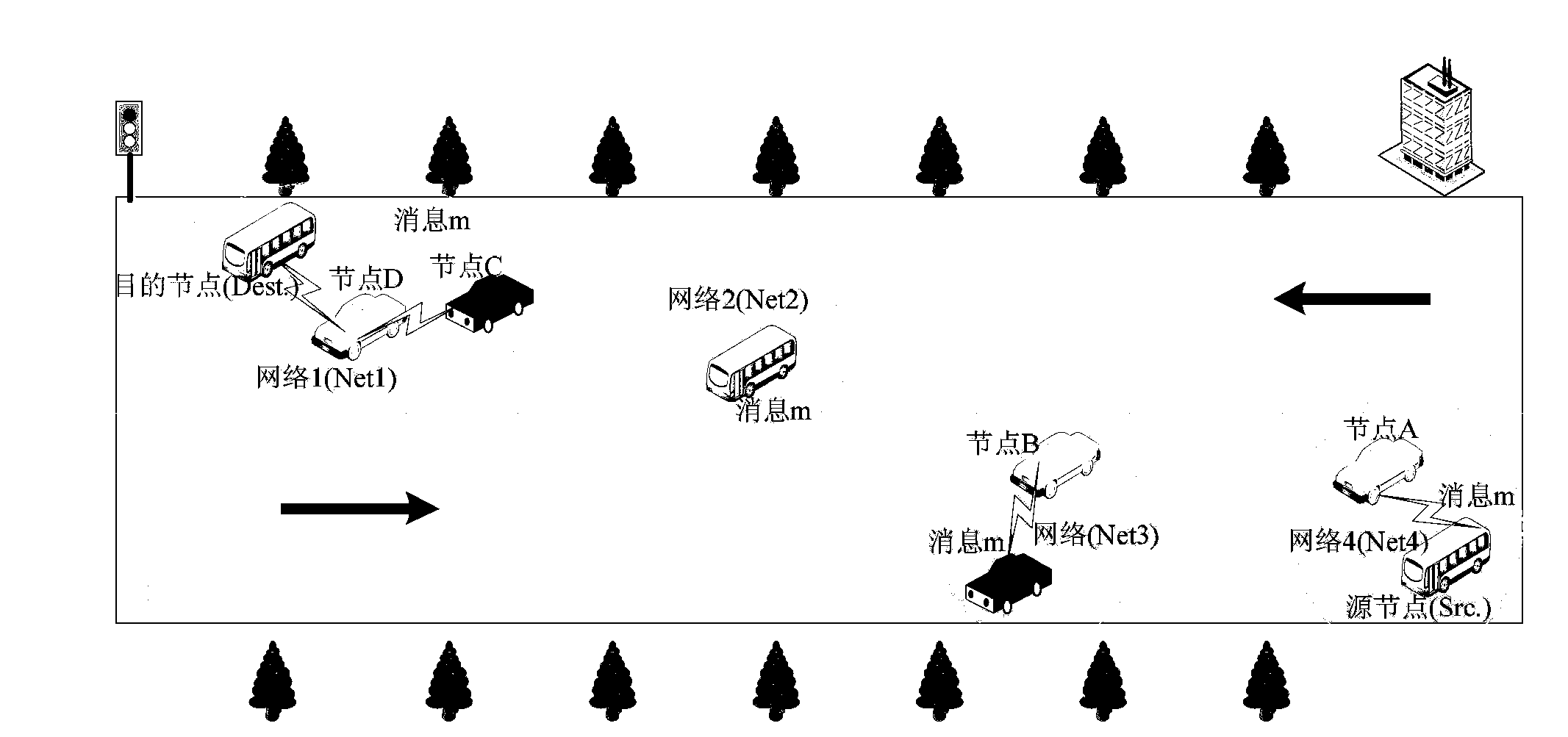Method applicable for scene with multiple sparse and dense vehicular ad hoc networks (VANETs)
A dense and scene-based technology, applied in the field of vehicle network, can solve problems such as not receiving rewards, discarding, whether nodes forward and whether excessive forwarding is lacking, etc.
- Summary
- Abstract
- Description
- Claims
- Application Information
AI Technical Summary
Problems solved by technology
Method used
Image
Examples
Embodiment Construction
[0083] Embodiments of the present invention will be described in detail below in combination with technical solutions and accompanying drawings.
[0084] The whole incentive mechanism is as Figure 4 It mainly includes 4 stages:
[0085] 1) Communication between VANETs nodes;
[0086] 2) Submit tickets, meet reports and the number of successfully delivered copies;
[0087] 3) GCPC calculates the distribution of income;
[0088] 4) Nodes earn income from GCPC.
[0089] In the communication phase, the source node in VANETs generates a message to be sent, and forwards the message to the destination node through the neighbor node (of course, if the destination node is within the transmission range of the source node, the source node can directly send the message to the destination node). In the second stage, when the intermediate node gets connected with GCPC, it submits the collected bills and meet report to GCPC as evidence of gaining benefits. When the destination node gets...
PUM
 Login to View More
Login to View More Abstract
Description
Claims
Application Information
 Login to View More
Login to View More - R&D
- Intellectual Property
- Life Sciences
- Materials
- Tech Scout
- Unparalleled Data Quality
- Higher Quality Content
- 60% Fewer Hallucinations
Browse by: Latest US Patents, China's latest patents, Technical Efficacy Thesaurus, Application Domain, Technology Topic, Popular Technical Reports.
© 2025 PatSnap. All rights reserved.Legal|Privacy policy|Modern Slavery Act Transparency Statement|Sitemap|About US| Contact US: help@patsnap.com



